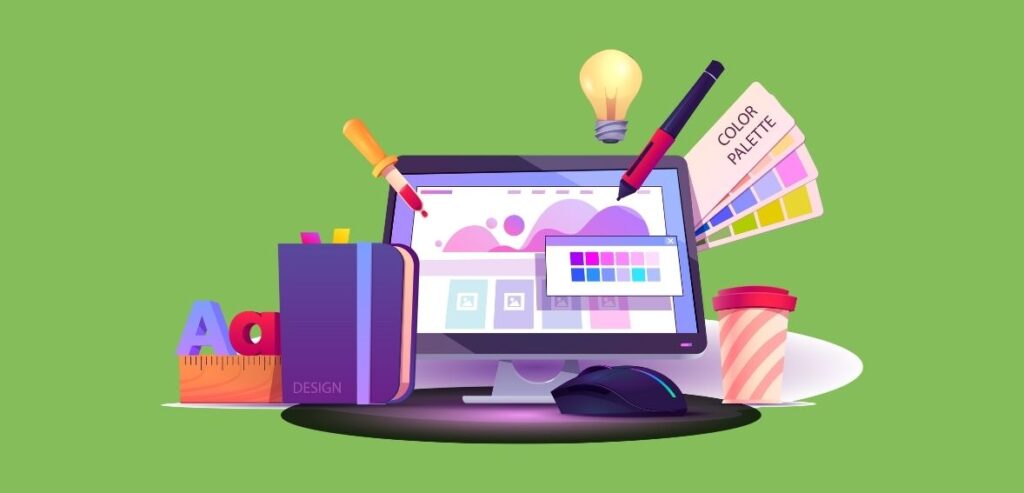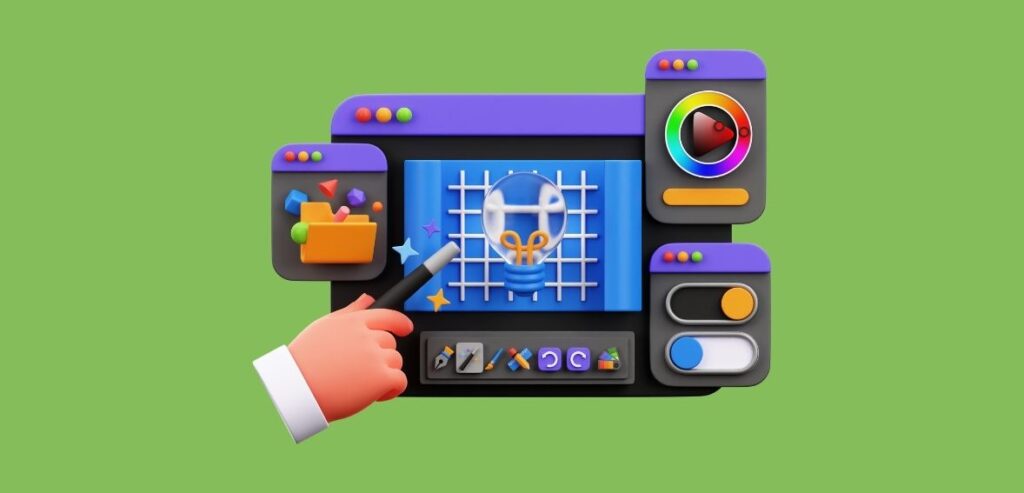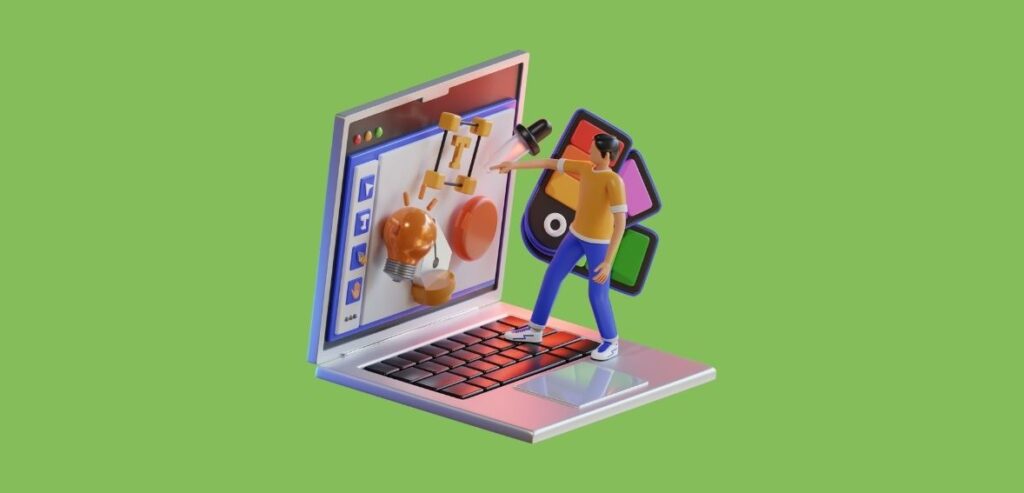The world of web design is undergoing rapid transformation, and 2025 promises to bring even more groundbreaking innovations. With the rise of AI-driven personalization, immersive 3D experiences, and cutting-edge user experience (UX) design, websites are evolving beyond static pages into interactive, dynamic platforms. As users demand faster, more engaging experiences, web designers must adapt to new technologies and trends to stay competitive.
One of the biggest shifts in 2025 is the widespread adoption of dark mode, neumorphism, and minimalistic UI, offering sleek, user-friendly interfaces. Meanwhile, augmented reality (AR) and voice search optimization are redefining how users interact with websites. AI-powered chatbots, dynamic content loading, and advanced animations are also set to enhance engagement and personalization.
For businesses, an effective website is no longer just about aesthetics—it must be fast, accessible, mobile-friendly, and SEO-optimized. Sustainable web design is also gaining traction, with developers focusing on eco-friendly practices to reduce carbon footprints.
In this article, we’ll dive deep into 30 must-know web design trends and expert tips for 2025, helping designers, developers, and business owners craft stunning, high-performance websites that stand out in the digital landscape. Get ready to future-proof your web design strategies!
Top Web Design Trends for 2025

1. Minimalist and Clean UI
Simplicity in web design is more important than ever in 2025. Users now favor clean, clutter-free interfaces that offer a smooth and intuitive browsing experience. A minimalist approach ensures that content stands out without unnecessary distractions, improving both usability and aesthetics.
Expect to see more whitespace, allowing elements to breathe and guiding users’ attention to key information. Sleek, modern fonts will dominate, enhancing readability and visual appeal. Minimalistic icons will replace overly complex graphics, making navigation effortless.
This trend isn’t just about aesthetics—it’s also about functionality. A simple design reduces cognitive load, helping users process information faster. It also improves website speed and mobile responsiveness, which are crucial for SEO and user retention.
By focusing on simplicity, designers can create elegant, user-friendly websites that keep visitors engaged and encourage conversions. The key is to strike a balance between minimalism and delivering essential content effectively.
2. Dark Mode with Neon Accents
Dark mode remains a dominant web design trend in 2025, but this year, it’s getting a futuristic upgrade. Designers are incorporating neon colors, glowing effects, and high-contrast elements to create visually striking interfaces. This combination not only enhances aesthetics but also improves readability and user engagement.
Neon accents against a dark background provide a cyberpunk-inspired feel, making websites look modern and dynamic. These glowing elements help guide users’ attention to important buttons, CTAs, or interactive sections, improving navigation and UX. Gradients, animated glows, and shadow effects further add depth and dimension, making the design feel immersive.
This futuristic take on dark mode is especially popular in gaming, tech, and entertainment websites, where bold visuals enhance the digital experience. By balancing brightness and contrast carefully, designers can ensure that the interface remains easy on the eyes while maintaining a cutting-edge, engaging look that stands out in 2025.
3. 3D and Immersive Visuals
In 2025, 3D elements and immersive experiences will play a major role in web design, thanks to advancements in web technologies like WebGL, Three.js, and CSS animations. Websites are no longer just static pages—they are becoming interactive and dynamic, responding to user actions in real time.
Expect to see 3D product showcases, interactive environments, and animated objects that users can explore by scrolling, hovering, or clicking. These elements enhance user engagement, making browsing feel more like an experience rather than just consuming content. Industries like eCommerce, gaming, and education are leveraging 3D to create realistic product visualizations, immersive storytelling, and interactive learning modules.
However, designers must balance aesthetics with performance, ensuring that 3D graphics do not slow down website loading speeds. Optimized rendering techniques and lightweight animations will help maintain smooth performance. The future of web design is interactive, and 3D is at the forefront of this transformation.
4. AI-Driven Personalization
In 2025, AI-driven personalization will revolutionize web design, creating highly customized user experiences based on real-time behavior. Websites will analyze user interactions, preferences, and browsing history to dynamically adjust content, layouts, and recommendations. This level of personalization makes web experiences more engaging, efficient, and relevant to individual users.
E-commerce sites will leverage AI-powered product recommendations, ensuring customers see items tailored to their interests. News platforms will present personalized article suggestions, while streaming services will refine content based on viewing habits. Even website interfaces may adapt—dark mode, font sizes, or content placement could change based on user preferences.
With AI-driven chatbots and voice assistants, customer support will also become smarter, offering instant, context-aware assistance. However, maintaining user privacy and ethical AI usage will be crucial to avoid data misuse. As AI continues to evolve, seamlessly personalized web experiences will become the standard, enhancing engagement and satisfaction.
5. Micro-Interactions for Better UX

In 2025, micro-interactions will play a crucial role in enhancing user engagement and improving website navigation. These small, subtle animations respond to user actions like hovering, clicking, or scrolling, making interactions feel more intuitive and rewarding.
For example, buttons may slightly expand when hovered over, giving users visual feedback. Icons may animate when clicked, confirming an action has been registered. Even scrolling can trigger smooth transitions, parallax effects, or fading elements, creating a more immersive experience.
These micro-interactions do more than just add visual appeal—they serve a functional purpose by guiding users, providing instant feedback, and improving usability. They make websites feel more interactive and responsive, reducing friction in user journeys.
However, designers must use them thoughtfully—too many animations can be distracting or slow down performance. When used strategically, micro-interactions enhance engagement, improve user satisfaction, and create a seamless digital experience in modern web design.
6. Glassmorphism Aesthetic
The frosted glass effect, also known as glassmorphism, will remain a major web design trend in 2025, bringing a modern, futuristic aesthetic to websites. This effect creates a semi-transparent, blurred background, resembling frosted glass, adding depth and layering to the design.
Web designers are using this technique to highlight cards, navigation bars, pop-ups, and backgrounds, making interfaces look sleek and visually appealing. The effect works exceptionally well with minimalist UI, dark mode, and neon accents, creating a sophisticated look that enhances the user experience.
Beyond aesthetics, glassmorphism improves readability and focus, subtly separating content while maintaining a connected, fluid design. With advances in CSS and WebGL, implementing the effect is now more efficient, ensuring fast performance without compromising aesthetics.
By combining the frosted glass effect with vibrant colors, subtle animations, and depth elements, designers can create stunning, immersive web experiences that feel both elegant and futuristic in 2025.
7. Brutalism and Retro Aesthetics
In 2025, bold, raw, and unpolished designs will emerge as a major web design trend, blending nostalgia with modern aesthetics. This approach embraces asymmetry, hand-drawn elements, pixelated graphics, and brutalist typography, creating a unique and expressive digital experience.
Unlike traditional polished designs, this trend focuses on raw authenticity, often inspired by 90s web aesthetics, grunge art, and DIY styles. Websites adopting this look may feature distorted fonts, overlapping layers, rough textures, and vibrant, clashing colors, evoking a sense of rebellion and creativity.
This aesthetic appeals to brands and creators looking to stand out and make a statement, particularly in art, fashion, music, and independent media. While the style feels chaotic, when executed thoughtfully, it creates a memorable and engaging experience that connects with audiences on an emotional level. In 2025, imperfection will become a design statement, proving that creativity isn’t always about being sleek and polished.
8. Animated and Dynamic Scroll Effects
In 2025, scroll-triggered animations, parallax effects, and storytelling elements will redefine how users experience websites, making them more interactive and immersive. Instead of simply navigating from page to page, users will feel like they are part of a dynamic journey as they scroll.
Scroll-triggered animations will bring elements to life—text may fade in, images may slide, and graphics may transform based on user interactions. Parallax effects, where background elements move at different speeds than foreground content, will create a sense of depth and motion, enhancing visual appeal.
Websites will also incorporate storytelling techniques, guiding users through a narrative as they scroll. This trend is especially popular for portfolio websites, brand storytelling, product showcases, and interactive blogs. When used effectively, these features improve engagement, retention, and emotional connection with users. However, designers must ensure smooth performance, as excessive animations can affect loading speeds and usability.
9. Augmented Reality (AR) Integration
In 2025, Augmented Reality (AR) will become a game-changer for web design, allowing brands to offer virtual try-ons, product demonstrations, and interactive experiences that boost user engagement. As AR technology becomes more accessible, websites will integrate it to create immersive, real-world interactions directly from a browser—no app download required.
E-commerce brands will leverage AR for virtual try-ons of clothing, accessories, and makeup, enabling customers to see how products look on them before purchasing. Furniture and home decor websites will allow users to place 3D models of products in their own spaces. Even automobile and tech companies will use AR for interactive product explorations.
This innovation enhances customer confidence and satisfaction, reducing returns and increasing conversions. With AR’s ability to make online shopping more experiential and engaging, brands that adopt it early will gain a competitive edge and redefine the digital shopping experience in 2025.
10. Voice UI and Conversational Design
In 2025, voice navigation and AI-powered chatbots will play a crucial role in enhancing website accessibility and user experience. As voice assistants like Siri, Alexa, and Google Assistant become more advanced, users are shifting towards hands-free interactions, making voice-enabled websites more relevant than ever.
Websites will integrate voice commands to allow users to search content, navigate menus, and interact with pages without typing. This will be especially beneficial for visually impaired users and those with mobility challenges, improving digital inclusivity.
Additionally, AI-powered chatbots will offer instant, intelligent customer support, providing personalized responses based on user queries. These chatbots will use natural language processing (NLP) to understand and predict user needs, making interactions more seamless.
As technology advances, voice and AI-driven interactions will become a standard feature, making websites more intuitive, efficient, and accessible for a broader audience in 2025 and beyond.
Essential Web Design Tips for 2025

1. Prioritize Mobile-First Design
In 2025, mobile-first design will be more important than ever as the majority of users browse websites on smartphones and tablets. Instead of designing for desktops first and then adapting for smaller screens, web designers will prioritize mobile usability from the start, ensuring a seamless, responsive experience across all devices.
This approach focuses on simplified navigation, touch-friendly buttons, and fast-loading content to improve accessibility and engagement. Clutter-free layouts, scalable fonts, and optimized images will ensure that content remains clear and easy to interact with, even on smaller screens.
Additionally, Google’s mobile-first indexing makes mobile optimization essential for SEO rankings. Websites that are fast, responsive, and mobile-friendly will perform better in search results.
By designing for smaller screens first, businesses can create more intuitive and accessible websites, ensuring users have a smooth experience whether they’re on a smartphone, tablet, or desktop.
2. Optimize for Core Web Vitals
In 2025, Google’s ranking factors will continue to prioritize loading speed, interactivity, and visual stability, meaning website performance is more critical than ever for SEO success. A slow, unstable site can lead to higher bounce rates and lower rankings, affecting traffic and conversions.
Loading speed is essential—pages should load within two to three seconds to keep users engaged. Optimizing images, using lazy loading, and minimizing JavaScript can help improve site speed. Interactivity, measured by First Input Delay (FID), ensures that users can quickly engage with buttons, links, and forms without lag.
Visual stability, defined by Cumulative Layout Shift (CLS), prevents elements from unexpectedly shifting while loading, improving user experience. Avoiding excessive ads, ensuring proper image dimensions, and using responsive design can help.
By optimizing for these factors, websites will rank higher on Google, enhance user experience, and increase engagement, making performance a key focus for web design in 2025.
3. Use Custom Illustrations Over Stock Photos
In 2025, hand-drawn and custom digital illustrations will be a powerful way to make websites unique, engaging, and memorable. Unlike stock images, custom illustrations add a personal touch that reflects a brand’s identity and storytelling style, helping it stand out from competitors.
These illustrations can range from sketch-style drawings to animated graphics, adding a creative and artistic feel to web pages. They work especially well for landing pages, product showcases, and storytelling sections, making content more visually appealing and relatable.
Additionally, hand-drawn elements enhance brand authenticity, creating a warm, human-like connection with users. Many businesses are moving away from generic, overly polished designs in favor of organic, imperfect, and expressive illustrations.
By integrating custom illustrations into website layouts, brands can capture attention, boost engagement, and create a lasting impression, ensuring their websites feel fresh and visually distinctive in 2025’s competitive digital landscape.
4. Enhance Navigation with Smart Menus

In 2025, simplified menus, sticky headers, and intuitive navigation will be essential for enhancing usability and engagement on websites. With users demanding faster, more seamless experiences, a clean and well-structured navigation system ensures they can quickly find what they need without frustration.
Simplified menus reduce clutter by displaying only the most important links, making browsing more straightforward. Instead of overwhelming users with endless options, designers will prioritize concise, well-organized navigation bars that guide visitors efficiently.
Sticky headers remain visible at the top of the screen as users scroll, keeping key navigation links accessible at all times. This feature improves ease of movement, especially on long pages, and enhances user retention by keeping important actions (like search bars or call-to-action buttons) within reach.
By implementing intuitive navigation, websites become more user-friendly, reducing bounce rates and increasing conversions, ultimately leading to a more engaging and satisfying experience for visitors.
5. Ensure GDPR and Data Security Compliance
In 2025, data privacy and security will be more important than ever as users become increasingly aware of how their personal information is handled online. With strict data protection regulations like GDPR, CCPA, and other global privacy laws, websites must prioritize compliance and transparency to build user trust.
To ensure privacy compliance, websites should have clear cookie consent banners, detailed privacy policies, and secure data encryption. Collecting only necessary user data and offering opt-in choices for tracking enhances transparency and reassures visitors.
Additionally, implementing secure payment gateways, multi-factor authentication, and regular security updates protects users from data breaches. Websites that prioritize privacy will not only gain user trust but also improve their SEO rankings, as search engines favor secure and trustworthy websites.
By maintaining strong data protection practices, businesses can create a safe browsing experience, fostering loyalty and confidence among their audience in 2025.
6. Leverage Motion UI for Engagement
In 2025, subtle animations and smooth transitions will play a crucial role in enhancing user experience and visual appeal on websites. These animations are not just decorative—they guide users, provide feedback, and create a seamless browsing journey.
For instance, hover effects, button transitions, and loading animations help users understand interactions, making websites feel more intuitive. Smooth scrolling, fading elements, and dynamic page transitions create a polished, engaging experience without overwhelming the visitor.
Subtle animations also improve website storytelling, drawing attention to key elements like call-to-action buttons, notifications, or featured content. When used effectively, they enhance engagement, reduce bounce rates, and create a more interactive experience.
However, designers must ensure that animations are lightweight and optimized to prevent slow loading times. A well-balanced use of animations can make a website feel modern, professional, and user-friendly, keeping visitors engaged and making navigation effortless.
7. Implement Lazy Loading for Performance
Optimizing web development by loading images and content only when needed is crucial for improving user experience (UX) and website performance. This technique, often referred to as “lazy loading,” ensures that only the essential elements are loaded initially, while additional content is fetched as users scroll or interact with the page. By minimizing the upfront loading, lazy loading significantly reduces page load times, enhancing accessibility and retention.
Faster loading pages not only keep users engaged but also improve search engine rankings, as loading speed is a critical factor in SEO. For image-heavy websites or pages with dynamic content, lazy loading prevents unnecessary strain on resources and reduces bandwidth consumption. Moreover, the adaptive nature of this approach supports various devices, ensuring seamless experiences across desktops, tablets, and mobile phones.
Implementing lazy loading is a practical step towards creating efficient, user-friendly websites that cater to modern browsing habits.
8. Improve UX with Predictive Design
AI-driven user experience (UX) leverages advanced algorithms to analyze and adapt to user behavior, creating tailored, dynamic interactions. By studying user preferences, browsing patterns, and engagement data, AI identifies trends and offers smart recommendations that align with individual needs. This personalization improves user satisfaction and fosters a deeper connection between users and digital platforms.
Dynamic content, enabled by AI, ensures that websites and applications can update in real time based on user actions. For example, e-commerce sites can display product suggestions that match browsing history, while streaming platforms can curate playlists or shows aligned with viewing habits. AI-driven UX also helps streamline navigation, reduce decision-making time, and enhance accessibility for diverse user groups.
As technology continues to evolve, AI’s role in UX design is reshaping digital interfaces to be more intuitive, responsive, and engaging, creating seamless experiences that cater to modern user demands.
9. Utilize AI Chatbots for Better Interaction

AI-powered chatbots revolutionize customer support and engagement by providing instant, personalized assistance, making websites highly interactive. These virtual agents leverage natural language processing (NLP) and machine learning to understand and respond to user queries efficiently, simulating human-like interactions. By operating 24/7, chatbots ensure that customers receive support anytime, reducing response times and boosting satisfaction.
In addition to resolving common issues, AI-driven chatbots can guide users through complex processes, such as product selection, booking, or troubleshooting. Their ability to learn from past interactions allows them to improve over time, offering increasingly accurate and relevant suggestions. Moreover, chatbots enhance engagement by initiating proactive conversations, providing updates, and even upselling or cross-selling products.
By streamlining customer service operations and delivering a seamless, engaging experience, AI-powered chatbots not only improve user satisfaction but also reduce costs for businesses, making them an indispensable tool for modern websites.
10. Experiment with Interactive Elements
Interactive elements like quizzes, polls, and gamified experiences significantly enhance user engagement and retention by making websites more dynamic and enjoyable. Quizzes can offer personalized insights or test users’ knowledge, encouraging them to participate and share their results. Polls invite users to voice their opinions, fostering a sense of involvement and community.
Gamified experiences—such as rewards systems, achievements, or playful challenges—tap into users’ competitive spirit, motivating them to explore and interact further with your site. These elements transform passive browsing into an active and immersive experience, which keeps users invested and coming back for more. Furthermore, interactive features can be tailored to match the brand’s tone and target audience, creating memorable experiences that align with user preferences.
By incorporating these engaging tools, websites can boost customer satisfaction, increase session durations, and enhance loyalty, ultimately driving better outcomes for businesses and building lasting connections with users.
Conclusion
Web design in 2025 thrives on innovation, personalization, and delivering exceptional user experiences. Modern websites focus on seamless functionality while incorporating visually stunning elements that captivate users. Personalization is key, with data-driven insights enabling tailored content, dynamic recommendations, and adaptive interfaces that cater to individual preferences.
Interactive features like quizzes, gamified elements, and immersive designs enhance engagement, keeping users invested longer. AI-powered tools, including chatbots and predictive analytics, streamline interactions and offer personalized solutions, transforming how users navigate and interact with websites. Sustainability also plays a role, with eco-friendly designs and optimized load times contributing to a greener digital landscape.
Staying ahead in 2025 means embracing these innovative trends, continuously adapting designs, and prioritizing user-centric approaches. By fostering creativity and leveraging cutting-edge technologies, websites can achieve striking aesthetics, impeccable functionality, and unforgettable user experiences, ensuring relevance in the ever-evolving digital space.
FAQs
What is the biggest web design trend in 2025?
AI-driven personalization and immersive 3D experiences are among the top trends for 2025.
How important is accessibility in modern web design?
Extremely important! Websites must be designed for all users, including those with disabilities.
Will AI replace human web designers?
Not entirely—AI will assist designers but human creativity and strategy remain irreplaceable.
How can I make my website load faster?
Use lazy loading, optimize images, and minimize unnecessary scripts.
What are the best tools for modern web design?
Figma, Adobe XD, Webflow, and AI-driven design tools lead the industry.

